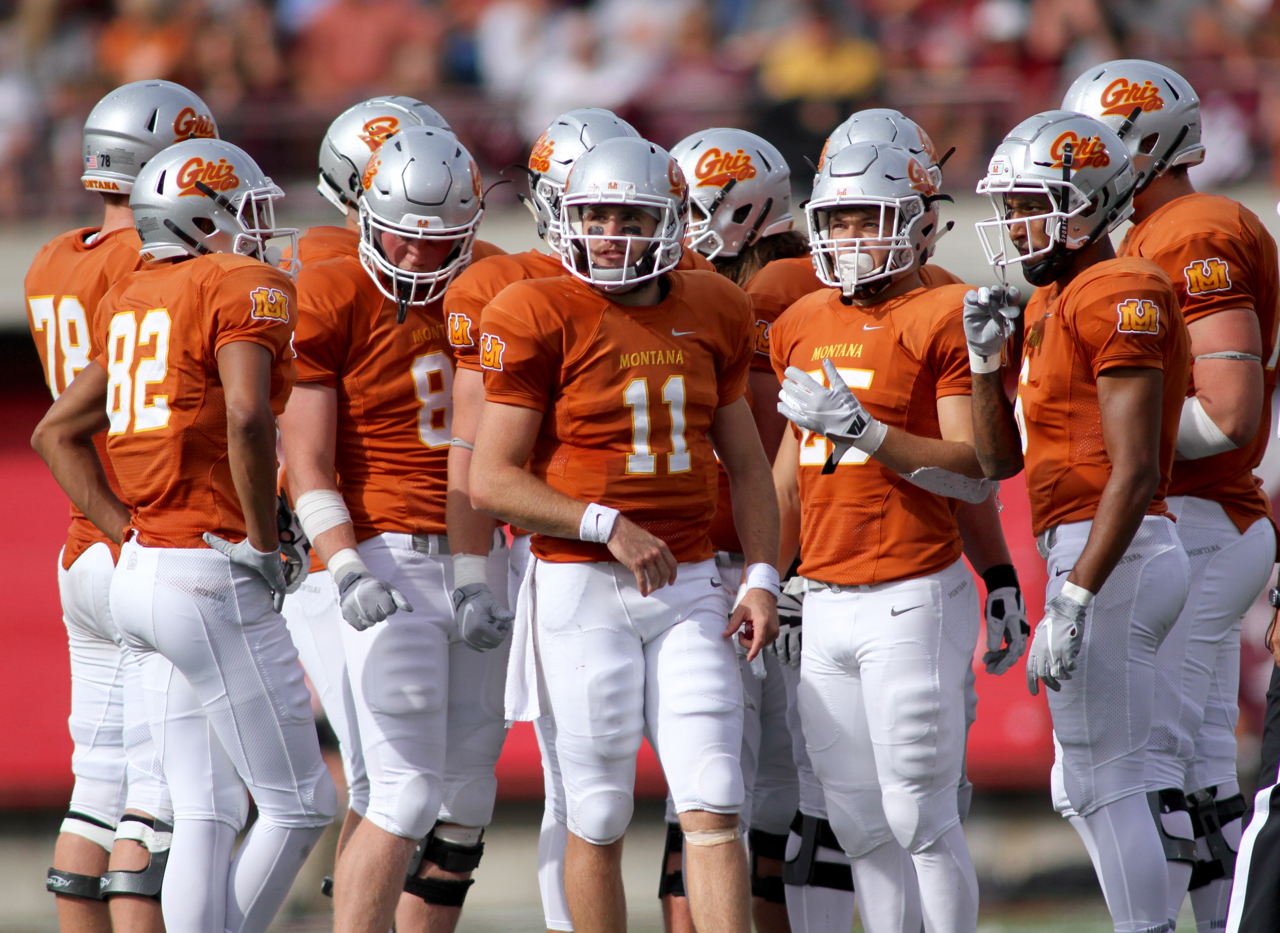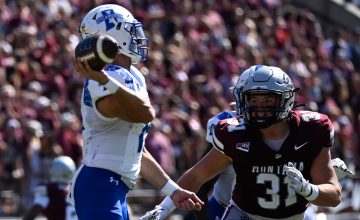MISSOULA, Montana — Eight teams in the Big Sky Conference open with FBS opponents, including Eastern Washington, Portland State, Montana State, Idaho and UC Davis taking on opponents from Power 5 conferences.
Cal Poly plays academic and regional rival San Diego. Northern Arizona and Sac State play games each is favored to win.
For the second year in a row, the Montana Grizzlies have arguably the most impactful, biggest game of Week 1 among Big Sky members. UM opens its 2019 season at Missouri Valley Football Conference foe South Dakota a year after opening the second Bobby Hauck era at Montana with a 26-23 win over No. 13 Northern Iowa.
The Griz are coming off a 6-5 season that included at least four losses that left Montana feeling like the result slipped away. South Dakota had a similarly disappointing season, taking Kansas State down to the wire in a 27-24 loss to open the season that helped the Coyotes break into the FCS Top 25.
USD drilled Northern Colorado 43-28 and gave No. 13 Weber State all it could handle in an eventual 27-10 loss. The Yotes moved to 4-2, similar to Montana’s 4-1 start, by winning over Southern Illinois and Missouri State.
South Dakota lost 42-28 to Northern Iowa, sparking a four-game losing streak that included a 51-48 triple overtime loss at Indiana State. USD rallied for a 17-12 win over Western Illinois, a team that beat the Griz 31-27 during the non-conference, before falling 49-27 to No. 5 South Dakota State to close the season with a 5-6 record.
“All the games are big to us,” Montana second-year head coach Bobby Hauck said. “Being on the road is probably different than the last few years. They’ve been all home games. But they are a quality opponent and that’s where it starts and ends for us.”
Montana appears to be much improved entering the second year of Hauck’s second stint at his alma mater. The Griz have 70 new faces on the roster since Hauck took over and return premier FCS talents in senior linebacker Dante Olson, a Buck Buchanan Award finalist, senior quarterback Dalton Sneed and junior wide receiver Sammy Akem.
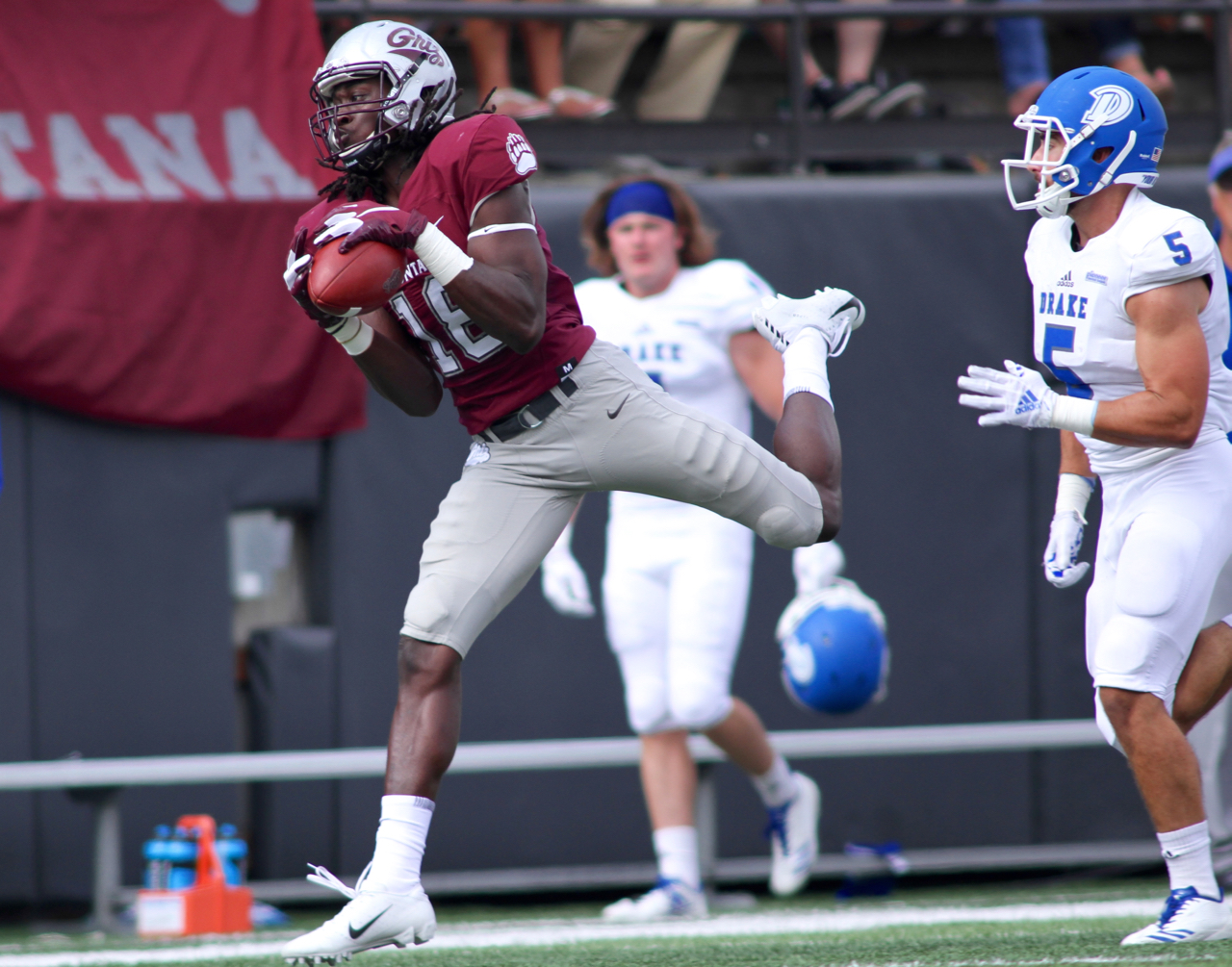
That trio plus a collection of other talented players, both transfers and rising young standouts, have the Griz optimistic about snapping a three-year drought from the playoffs. Such a dry spell seemed unthinkable not long ago. The Griz made the FCS playoffs 22 times in 25 seasons including a college football record 17 years in a row between 1993 and 2016.
The rest of Montana’s non-conference schedule has predictable results. The Griz should likely handle North Alabama and Monmouth at home. Upsetting FBS No. 11 Oregon will be a tall task.
And UM’s Big Sky schedule is one of the toughest in the conference. The Griz open up at defending conference co-champion UC Davis. Montana hosts 2018 co-champions Eastern Washington and Weber State. And the Griz play at rival Montana State, a 2018 playoff team.
Winning in Vermillion could help the Griz get a victory under their belts before the brutal league slate. And it could be the difference between Montana sitting on the FCS playoff bubble or snapping its post-season drought.
“We need to just go play,” Hauck said. “First games are certainly interesting. We just want to look sharp, take care of the football, play a good, sharp game in all three phases.
“I don’t think you know your team until you play some. I’m excited to watch our guys play. I really have a high regard for the people on our team just as individuals and how much they enjoy playing for and with each other.”
QUICK HITS
Location: Vermillion, South Dakota
Nickname: Coyotes.
Founded: 1862, a full 27 years before the establishment of the state of South Dakota. USD is the state’s oldest public university, the university is home to South Dakota’s only medical school and law school.
Enrollment: 9,971 including 7,435 undergraduates with an endowment of $258.1 million
Stadium: The DakotaDome is a 10,000-seat multi-purpose stadium that opened in 1979 for a cost of $8.2 million. The DakotaDome was also the home site for the NAIA school Briar Cliff University football team until 2017, when they re-located 25 miles to the southeast to Sioux City, Iowa.
Formerly an air-supported structure, numerous roof collapses led to it being replaced by a $13.7 million steel roof in 2001. In early 2019, construction to rebuild the interior of the west side of the stadium began. The project will cost $26.3 million and is scheduled for completion in 2020.
The Coach: Bob Nielson, third season at South Dakota. In 1998, his 10th year as a collegiate head coach, Nielson experienced success on a national level, leading Wisconsin Eau Claire to the NCAA Division III national semifinals. That performance helped land him the Minnesota-Duluth head coaching job, a position he held from 1999 until 2012.
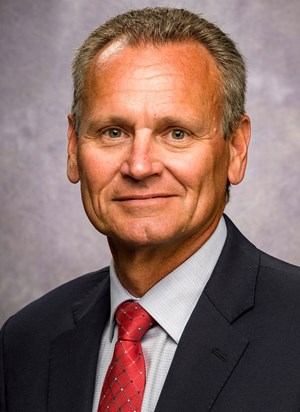
At Duluth, Nielson established a reputation as one of the top small-school coaches in the country, leading the Bulldogs to five Northern Sun Intercollegiate Conference championships in six seasons. Duluth won the 2008 and 2010 Division II national titles, advancing to the quarterfinals in 2009 and 2011. Nielson went 100-26 at Duluth all told.
In 2013, Nielson took the head coaching job at Western Illinois. By the third season, the Leathernecks were in the FCS playoffs. But the budget crisis in Illinois and the shadow it’s cast on the future of athletics caused for Nielson to search elsewhere for a gig.
Joe Glenn, who led Montana to 39 wins, two national championship game appearances and the 2001 FCS national title, retired from his alma mater following the 2016 season. That opened the door for Nielson.
In three seasons at USD, Nielson is 16-19 overall and 10-14 in Missouri Valley play. The 2017 Coyotes went 8-5, earning a berth in the FCS playoffs and winning the first playoff game in school history with a 38-31 win at Nicholls State.
“Coach Nielson does a great job, first and foremost,” Hauck said on August 26. “He’s a good man, a solid person. He runs his team the way it should be run. He’s worked his way up through the ranks and has great success. He’s always done it the right way.
“They will be solid on the field – offense, defense and special teams – and they will be coached right. He runs a really fine, well-oiled program that has great structure and great base for all the players.”
THE OFFENSE – Players to watch
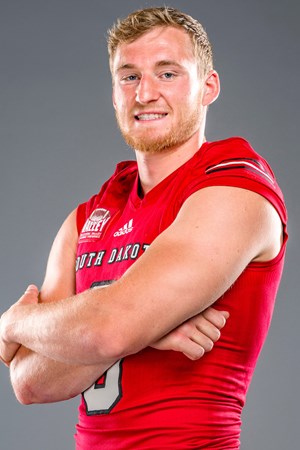
Austin Simmons, quarterback, senior, 6-1, 215 — The tough dual threat was one of the best quarterbacks in the Missouri Valley in a league that also featured future NFL signal callers Easton Stick of North Dakota State and Taryn Christion of South Dakota State along with senior Sean McGuire at Western Illinois.
Simmons threw for 3,124 yards and 18 touchdowns, the former the second-most in South Dakota history behind only Chris Streveler’s 2017 season that saw the Walter Payton Award finalist throw for 4,134 yards and 32 touchdowns. Simmons earned honorable mention All-MVFC quarterback honors behind the three aforementioned standouts.
“It starts with their quarterback,” Hauck said. “He’s a really fine player. He’s thrown for a ton of yards throughout his career, a lot last year. They hae most of their skill players back for the most part on that side of the ball. They will be hard to get a handle on. They will put points up in bunches and I think when your best player is your quarterback, it makes you a dangerous offensive outfit.”
In the run-heavy Missouri Valley, South Dakota is an outlier. Last season, Simmons completed more passes (287) than six starting quarterbacks in the league even attempted. And Simmons still managed to lead USD in rushing yards (549) before the sack subtractions were accounted for. And Simmons did not throw an interception in 153 consecutive pass attempts between 2016 and 2018.
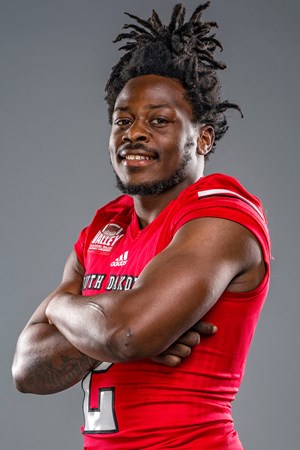
Kai Henry, running back, junior, 5-8, 200 — The slashing native of Miami — one of 16 Florida natives on the South Dakota roster — has been one of the Yotes’ most productive ball carriers since arriving in Vermillion.
The quick, explosive runner piled up 613 yards on 135 carries as a true freshman, racing for a season-high 109 yards against No. 5 South Dakota State. He scored six touchdowns as a rookie.
Last year, he started eight games and played in 10, leading the team with 509 yards and seven touchdowns. He also caught 21 passes for 82 yards and a touchdown. His career high came in a 113-yard, two-touchdown effort against Indiana State.
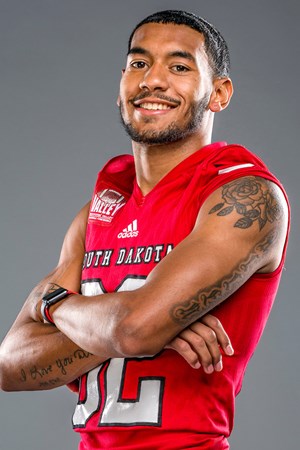
Dakarai Allen, wide receiver, senior, 6-1, 180 — As a junior, Allen earned second-team All-Missouri Valley honors after catching 48 passes for 703 yards and five touchdowns. His catch total was the ninth-most by a USD player since 2000.
Durjng one five-game stretch, Allen led the Yotes in receiving yards every outing, piling up 29 catches for 511 yards and three scores. Against Southern Illinois, Allen caught six passes for 183 yards, including an 89-yard touchdown catch in a 31-24 win.
In his career, Allen has 75 catches for 1,004 yards and 11 touchdowns in his career. The Largo, Florida native was an all-county selection in basketball in high school.
THE DEFENSE – Players to watch
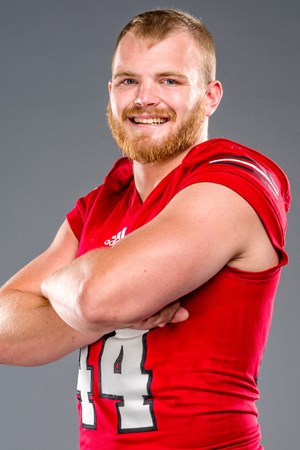
Darin Greenfield, defensive end, senior, 6-3, 235 — When asked about South Dakota’s defense, Hauck immediately went to breaking down Greenfield’s individual talent.
“He’s a preseason All-American and he’s a good player,” Hauck said. “I was just kind of watching him over the weekend and he reminds me of (Greg) Peach from Eastern Washington (the 2008 Buck Buchanan Award winner). I don’t know if it’s just the red uniform but watching him move, watching him come out of his stance, how is he pretty relentless trying to get to the quarterback, he’s a good player. He’s the guy they rely on for play-making. It starts with him.”
After giving up 34.2 points and 430 yards per game, Nielson replaced his defensive coordinator with Travis Johansen, an up-and-comer in the coaching world who spent the last six seasons at Grand View of the NAIA.
One of Johansen’s top playmakers is sure to be Greenfield, a first-team All-MVFC selection each of the last two seasons and a second-team All-American in 2017. As a sophomore, the powerful, hard-charging end notched 19.5 tackles for loss and nine sacks, both top 10 marks in South Dakota history.
Last season, facing more consistent attention from opposing offensive lines, Greenfield stillmanaged to pile up 14.5 tackles for loss and six sacks among his 55 total tops. He forced two turnovers and had 13 quarterback hurries.
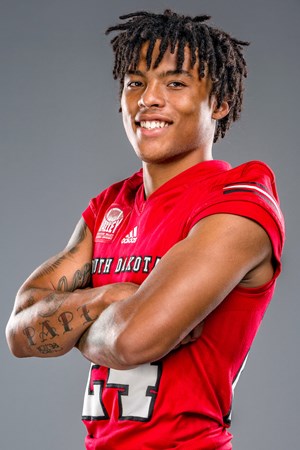
Mark Collins Jr., cornerback, junior, 5-11, 180 — Collins was one of 18 redshirt freshmen to break into the rotation for the Coyotes in 2017, starting the final six games of the season at cornerback. He hasn’t look back since that debut campaign that saw him interception a pass on the second play of his college debut against Drake.
Last season, Collins led the country in passes defended, notching 14 in just seven games of action before an injury cut his sophomore year short. His renewed health will be key for South Dakota’s secondary.
Zach Cochrane, linebacker, 6-3, 230 — As a high school running back in Mount Vernon, Iowa, Cochrane set a school record by piling up 406 points, including 52 rushing touchdowns and 14 receiving touchdowns in his decorated career.
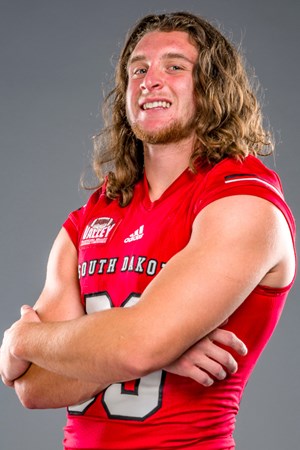
Last season as a true sophomore, the talented middle linebacker who is also a first-team All-MVFC academic team selection, finished second on South Dakota with 82 tackles, including a career-high 12 stops against No. 1 North Dakota State. He also had one forced fumble, one recovery and two pass breakups.
As a true freshman, Cochrane had a role in forcing a fumble to lift the Coyotes to their first-ever playoff win at No. 22 Nicholls in the 2017 FCS playoffs.
Photos courtesy of South Dakota Sports Information or Brooks Nuanez. All Rights Reserved .

